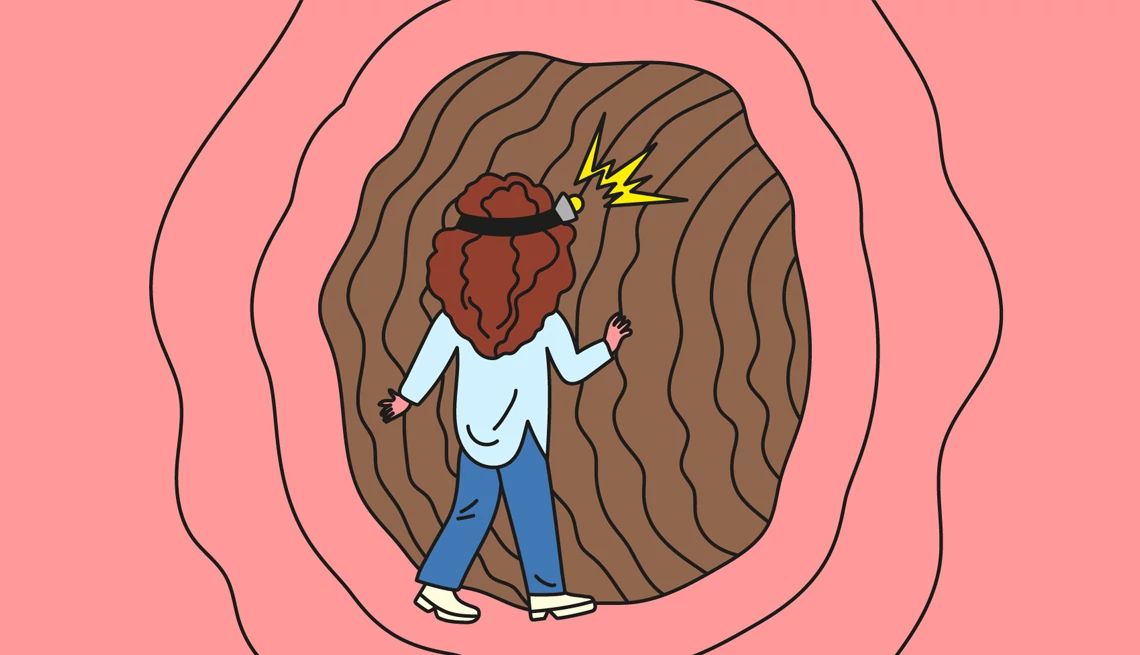AARP Hearing Center


Women’s bodies can change in confounding ways as we age. I decided to check in on how everything is holding up, what we all need to know about healthy aging and who’s responsible when things go awry. (I’m looking at you, estrogen!)


Your breasts: The headliners
Me: Of all of my parts, you’ve always been my favorite. Remember that time the guy at the liquor store refused to give me a refund because I didn’t have a receipt, so I returned in a fur coat with nothing underneath but a push-up bra and I got my money back? Good job!
Breasts: We do our best.
Me: Of course, I was a little younger then, and you were a little higher.
Breasts: A little? Ha ha. By the way, that bra you wear when you sleep? May not make the slightest difference.
Me: [Sigh.] I feel I know you only on the surface. What’s going on inside?
Breasts: We’re made up of three parts: the fibroglandular tissue — the lobes and the smaller lobules within them that produce milk, and the ducts that carry milk to the nipples; the fibrous tissue that holds us in place; and the fatty tissue — the space between the lobes, ducts and fibrous tissue that gives us our va and our voom.
Me: Women think a lot about the size of their breasts, but we should be thinking about more than size, shouldn’t we? There’s the question of, like, density.
Breasts: When doctors talk about our density, they’re referring to our relative amounts of connective tissue/glandular material versus fat. We breasts tend to be denser when a woman is younger. As you age, we become fattier, even if the rest of you stays the same size. There are extremes of fattiness and denseness (about 10 percent of women fall into each category), but most women are somewhere in the middle. Women with dense breast tissue throughout their lives have a higher risk of breast cancer.
Me: Why?
Breasts: No one really knows. It may be because small cancers are harder to catch early on in dense breasts, or it may be something about the nature of the tissue itself. Dense breasts are only one among several risk factors, including family history, radiation therapy for other medical conditions and, simply, aging. Also, you might want to be particularly vigilant if you’re Black or Latina, since you tend to present with breast cancer younger than white women — and with more aggressive cancers too. So while all of us breasts really appreciate regular mammograms, your dense breasts would probably appreciate them a little bit more.
Nipples: Excuse me, can we make a point?
Me: Yes, if I turn on the air-conditioning. I know, bad joke.
Nipples: FYI, we’re not just the conduits to milk. Nursing releases oxytocin, a hormone that conveys a sensation of pleasure and contentment to the brain. This is why nursing was a bonding experience with your child, and why many of us found it so sad when we gave up breastfeeding.
Me: But you can hurt like a mofo too.
Nipples: Yup. And as we get older, you need to pay attention to us: Pain, discharge or inversion of the nipples can indicate cancer. But we’re still playing an important role in your sex life, even after menopause: We connect to nerve systems that connect the clitoris, vagina, cervix and uterus to the brain.
Clitoris: Sing it, sister.


Your vagina and clitoris: The mystery achievers
Me: Well, hello, Ms. Clitoris. I found you … when I was about 12, I think.
Clitoris: When you found that hidden copy of Our Bodies, Ourselves, like half of all American women who came of age in the 1970s?
Me: Um, it was a copy of Portnoy’s Complaint, but you have the idea.
Vagina: What about me? Am I not the most amazing body part?
Me: I can’t say I’ve actually looked at you too carefully. Can you give me the guided tour?




































































You Might Also Like
Are Multivitamins Good for You?
A doctor’s advice on who should take this daily supplement and who shouldn’t
25 Tips to Manage Your Stress
From scheduling stress and serenity to eating away the inflammation, here are ways to copeIn the Mood: Erections and Orgasms
Advice about how to have an erection without medication and helping a woman reach an orgasm
Recommended for You